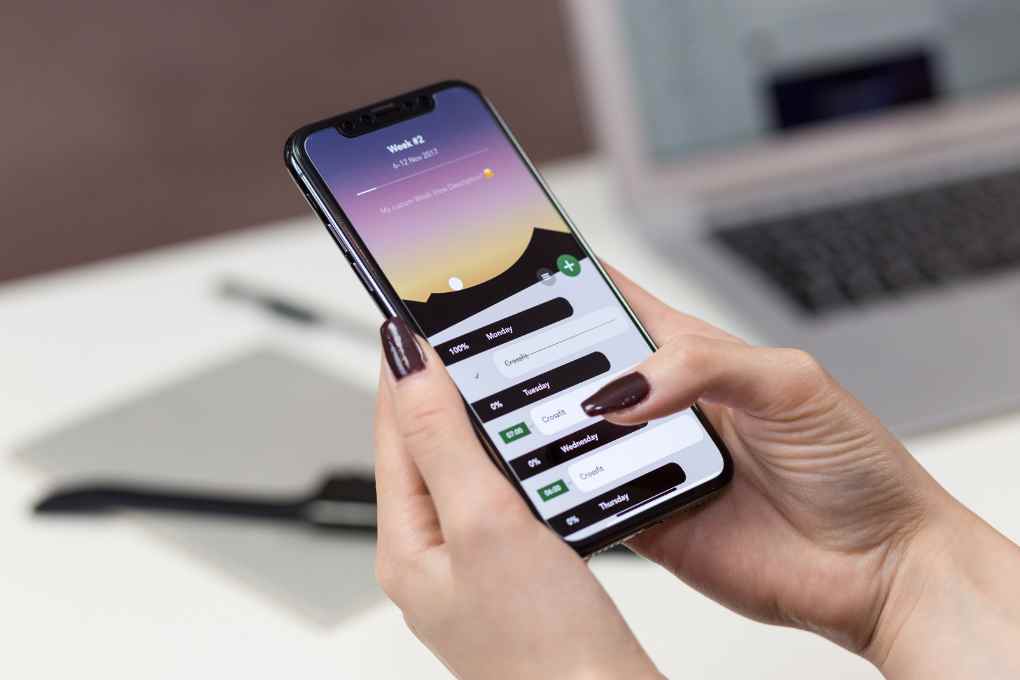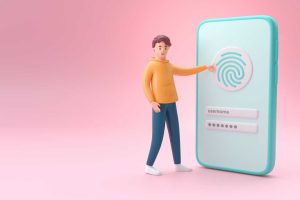12 Smartphone Myths Put To The Test

We all use them, but only some people know precisely how smartphones work. For this reason, numerous myths have arisen around these devices over the years. Some of them – such as exploding cell phone batteries or dangerous radiation – can be debunked relatively easily. Other myths are more complex.
In some cases, a kernel of truth is behind it that applies to older models. But the smartphone world is changing rapidly: many things that were true yesterday are no longer true today. In this article, we want to check the truth of the 12 most persistent smartphone myths.
Table of Contents
An IP Protection Class Makes The Smartphone Waterproof
Many current smartphones have a protection class, such as IP67 or IP68. The second number stands for water protection – for around 30 minutes at a depth of 1.5 m. But does that mean that your cell phone should be with you every time you dive in the pool? We advise against it!
On the one hand, the IP certification only indicates water protection under laboratory conditions: in still, pure water. These conditions can hardly be replicated in everyday life. On the other hand, the protection class is based on a new, undamaged smartphone. If you drop the excellent piece once too often, hairline cracks can occur, and the tightness is lost.
Accordingly, it is worth looking at the warranty conditions: very few manufacturers cover damage caused by liquids, and in an emergency, you have to pay for repairs or replacement yourself.
Conclusion: Your smartphone may be waterproof under the right conditions – but you shouldn’t try it out.
The Battery Should Be Empty Before Charging
This myth was justified at a time when smartphones were still equipped with nickel-cadmium batteries. These lose their capacity over time if they are charged while complete.
However, the current smartphone’s battery level should never drop to 0%. The reason is that lithium-ion batteries can be damaged and fail in the worst case. Instead, connecting the smartphone to the power supply is recommended when it has a remaining charge of 10-20%. Some devices switch off automatically when this value is reached, so damage is ruled out from the start.
Conclusion: Complete discharging is no longer necessary or even practical with today’s smartphones.
It Would Help If You Did Not Permanently Leave Your Smartphone On The Charging Cable
Many users charge their smartphones overnight, so the battery is complete the following day. However, this procedure increases wear and tear as the battery is charged unnecessarily often.
To illustrate this, let’s assume that your smartphone is connected to the charging cable for 8 hours. After one hour, 100% is reached, and charging stops automatically. The battery empties, and charging begins again – several times per night. This reduces capacity in the long run. To protect the battery, you should charge it daily – up to a maximum of 90%. Alternatively, you can turn off the smartphone before setting it at night and thus avoid multiple charging cycles.
Conclusion: This myth is true. If you want to save your phone’s battery, you shouldn’t charge it all night.
The Battery Lasts Less Long In Cold Weather
While on batteries, many users report that their smartphone doesn’t last as long on cold days as in a warm environment. This observation is subjective but based on simple physics: Today’s lithium-ion batteries are filled with a liquid – a so-called electrolyte – in which ions float from the negative to the positive pole. The electrolyte becomes more viscous at low temperatures, and the ions slow down. This reduces both the performance and the lifespan of the battery. In extreme temperatures, it can even happen that the smartphone switches off due to a lack of power.
Conclusion: If you want your smartphone to last longer on cold days, you should only take it out of your pocket when necessary.
Unlocking With Facial Recognition Is Unsafe
Facial recognition is a convenient way to unlock your smartphone without pressing a button or entering a password. But years ago, users came across a weak point: the technology can be easily outsmarted. All you need is a photo of the phone owner. You hold this up before the camera, and the smartphone thinks its owner is unlocking the cell phone.
However, this method only works with so-called 2D face recognition. Some devices – including current iPhones – use the much more complex 3D facial recognition. The sensor analyzes prominent image points and a three-dimensional image of the face. Outsmarting the sensor is almost impossible.
Conclusion: The myth is partly true. 2D facial recognition is much easier to trick than a fingerprint scanner or a good password. However, 3D recognition is considered a safe method.
Also Read: Biometric Data And Security
It Would Help If You Had A Smartphone With The Latest Hardware
Smartphones are becoming more and more powerful and can now even compete with laptops and PCs. But of course, fast hardware comes at a price – up to 1,000 euros or more. Before you buy a device with the latest chip and tons of RAM, you should ask yourself: Do I need this much power in everyday life?
Many experts agree that smartphone hardware has made such leaps in recent years that very few apps can take advantage of this performance. For example, if you want to surf the Internet, watch videos, and play one or two games, you are still well advised to use older hardware. You should only buy a compelling smartphone if you answer the following questions positively:
You often use sophisticated software such as image and video editing, augmented reality apps, or 3D design.
You want to play particularly hardware-hungry games like Genshin Impact, PUBG, or Call of Duty Mobile at the highest settings.
Suppose you like to have a lot of apps running in the background and want to switch between them quickly. Then, a large amount of main memory (RAM) is significant.
A Camera With A Higher MP Number Is Automatically Better
The megapixel number of a smartphone camera indicates the number of pixels – and thus the sharpness. The statement that cameras with more MP can produce more detailed photos is accurate. However, the differences are only partially visible on a small cell phone display as the number of megapixels increases.
On the other hand, it’s not just the sharpness that determines how well you take photos with your smartphone. The size of the sensors – and thus the light sensitivity – is also essential, especially in poor lighting conditions. Optical image stabilization helps to compensate for wobble without a tripod, and optimization via software is also becoming increasingly important. The best example of this is smartphones from the iPhone 13 series. These have just 12 MP, but in camera tests, they perform just as well, if not better, than devices with four times higher resolution.
Conclusion: The MP number is just one indicator of the quality of smartphone cameras – and should only be a priority if you want to print images in large format or greatly enlarge them.
More Cameras Automatically Deliver Better Results
The days when smartphones only had a rear camera are long gone. Instead, many manufacturers equip their devices with three or even four lenses. But do more cameras automatically make sense? As is often the case, you shouldn’t be blinded by quantity but pay attention to quality. For example, Anyone who likes to take close-up photos will appreciate a macro lens on their cell phone. However, the images are hardly usable due to low resolution. In that case, it is more of a marketing ploy by the manufacturer than a serious tool.
The same applies to depth sensors. You can use it to give your portraits artistic, blurry blurring effects. However, many smartphones achieve the same impact via software. The best example is the Google Pixel 6, which has two lenses and is still at the forefront regarding photo quality.
Conclusion: Many cameras look good in advertising brochures. Before buying, however, you should ask critically: Are the lenses able to take photos in the desired quality?
Auto Brightness Helps Save Battery
Dimming the smartphone display is an effective way to extend the battery life. Of course, not all users think about this daily – so manufacturers equip their smartphones with automatic brightness. A sensor registers the incidence of light and adjusts the display to be best readable. But does that also save energy? Opinions differ on this question.
On the one hand, automatic brightness control relies on computing processes that consume electricity. On the other hand, this consumption is significantly lower than the display’s energy consumption. An exception would be if you frequently move from a very dark to a very bright environment and the software is constantly used. Speaking of bright environments, when auto-brightness is enabled, many smartphones make the screen brighter in sunlight than would be possible with manual settings. This, of course, increases energy consumption.
Conclusion: The answer to this question depends heavily on individual behavior. However, under normal circumstances, auto-brightness helps save battery for most users.
Also Read: Self-Timer On The iPhone: Here It Is, And This Is How You Use It
Installing Apps From Unofficial Sources Is Dangerous
This “myth” is particularly relevant for developers, beta testers, and users of Huawei phones who cannot download apps from the Google Play store. These rely on installing apps manually. This, in turn, carries a risk: While Google Play and Apple’s App Store check programs for malware, this check is unavailable on unofficial app sites. In the worst-case scenario, the app is a virus in disguise. That’s why we recommend that average users leave the installation of apps from unknown sources disabled by default. If you still rely on appropriate apps, you should first thoroughly find out about the reputation of the manufacturer and the website’s reputation to rule out fraud attempts.
Conclusion: Yes, installing apps from unknown sources can be risky and is not recommended for laypeople.
Virus Scanners Make Your Phone 100% Safe
The Internet is dangerous:
- Malware and viruses are waiting to spy on your smartphone.
- Ransomware blackmails you into locking your screen.
- Hackers are lurking for sensitive data like passwords and banking information.
It makes sense to install an anti-virus program in addition to the built-in security software.
What many users underestimate: Fraudsters only sometimes use sophisticated technical means to get your information. Examples are messages or calls from seemingly official authorities asking you to pass on credit card numbers or passwords. Sometimes, criminals even pose as Facebook friends or trustworthy companies. The link to the updated banking app can become malware that penetrates deep into your smartphone system.
Conclusion: Anti-virus software on the smartphone can be helpful. However, the best protection is still common sense and caution when sharing personal information.
Also Read: The Role of Identity and Access Management in Strengthening Cybersecurity







